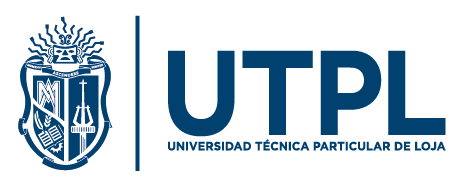Creative literacy in young students, Yucatán, México
DOI:
https://doi.org/10.58508/cultpaz.v7.197Keywords:
Literacy, Writing, Youth, Creativity, HorizontalityAbstract
This paper is part of the project “Creative and inclusive literacy for high school youth in the south of Yucatán: health education” carried out that was promoted during the months of November 2020 to March 2021 by Consejo Nacional de Humanidades, Ciencia y Tecnología (Conahcyt) and Universidad Autónoma Metropolitana, Cuajimalpa, México. We present the scope and findings of the research and social impact strategy that we have named Write to be read implanted in the municipality of Santa Elena, Yucatán, located in the south of the state and characterized by high rates of migration to the United States, a majority of Mayan-speaking population with high levels of poverty and educational lag.
Following Paulo Freire and Mario Kaplún we base a creative literacy proposal based on people’s needs to know and perform in public spaces. Freire structures his method in phases: obtaining the vocabulary universe, valuing the pragmatic dimension of words and creating everyday situations that, at the same time, generate awareness and teach literacy. Kaplún emphasizes the communicative function of language that allows the student to develop their autonomy when writing. The conceptual framework was developed from the horizontal methodologies proposed by Sarah Corona and Olaf Kaltmeier, which made it possible to work on the difference and, from there, dialogue with the participants involved in the proposal.
We propose a creative writing strategy with the purpose that young people and teachers express in writing and orally their daily lives that break individual coverage and the collective imagination of their own name appears, that is, they recognize themselves and others as authors as a form of social inclusion.
Downloads
References
Bellatin, M. (2006). El arte de enseñar a escribir. Fondo de Cultura Económica.
Canieso-Doronila, L. M. (1999). Paisajes de la alfabetización. Un estudio etnográfico de la alfabetización funcional en comunidades marginales de las Filipinas. UNESCO, PYV Editores.
Corona, S y O. Kaltmeier (2012). En diálogo. Metodologías horizontales en ciencias sociales y culturales. Gedisa.
Freire, P. (1969). La educación como práctica de la libertad. Siglo XXI.
Guerrero, P. (2016). Colonialidad del saber e insurgencia de las sabidurías otras: Corazonar las epistemologías hegemónicas, como respuesta de insurgencia (de)colonial. Tesis. Universidad Andina Simón Bolívar, sede Ecuador.
Instituto Nacional de Estadística y Geografía. (2015). Encuesta Intercensal 2015. INEGI. https://www.inegi.org.mx/programas/intercensal/2015/
Instituto Nacional de Estadística y Geografía. (2021). Censo de Población y Vivienda 2020. INEGI. https://www.inegi.org.mx/programas/ccpv/2020/
Kaplún, M. (2001). A la educación por la comunicación. La práctica de la comunicación educativa. Ediciones Ciespal, Colección INTIYAN (Vol. 41).
Secretaría de Educación del Gobierno del Estado de Yucatán. (2021). Estadística Educativa. Sistema de Estadística Educativa de Yucatán. http://estadisticaeducativa.sigeyucatan.gob.mx/estadistica
Secretaría de Educación Pública. (2019). Líneas estratégicas del Programa Fortalecimiento de la Calidad Educativa. https://www.planyprogramasdestudio.sep.gob.mx/descargables/biblioteca/PFCE/PFCE_completo.pdf
Downloads
Published
How to Cite
Issue
Section
License
Copyright (c) 2024 Inés Cornejo Portugal, Vicente Castellanos Cerda

This work is licensed under a Creative Commons Attribution-NonCommercial-ShareAlike 4.0 International License.
Aquellos autores/as que tengan publicaciones con esta revista, aceptan los términos siguientes:
- Los autores/as conservarán sus derechos de autor y garantizarán a la revista el derecho de primera publicación de su obra, el cuál estará simultáneamente sujeto a la Licencia de reconocimiento de Creative Commons 4.0 BY-NC-SA que permite a terceros compartir la obra siempre que se indique su autor y su primera publicación esta revista.
- Los autores/as podrán adoptar otros acuerdos de licencia no exclusiva de distribución de la versión de la obra publicada (p. ej.: depositarla en un archivo telemático institucional o publicarla en un volumen monográfico) siempre que se indique la publicación inicial en esta revista.
- Se permite y recomienda a los autores/as difundir su obra a través de Internet (p. ej.: en archivos telemáticos institucionales o en su página web) antes y durante el proceso de envío, lo cual puede producir intercambios interesantes y aumentar las citas de la obra publicada. (Véase El efecto del acceso abierto).
-
Los autores han respetado la política de autoría de esta revista.






